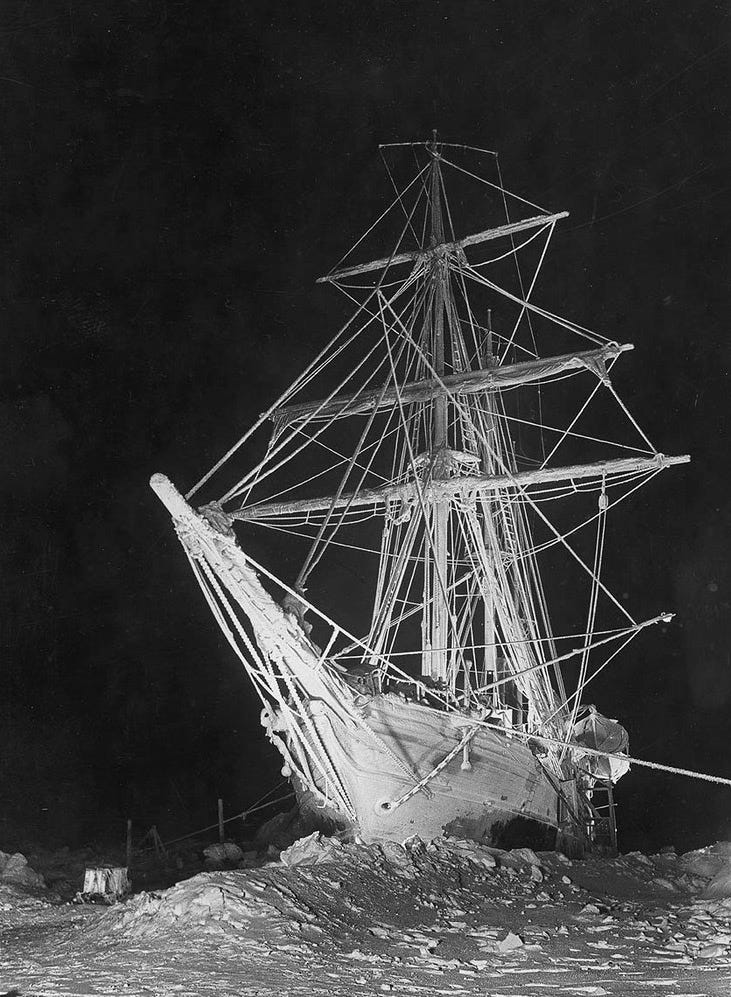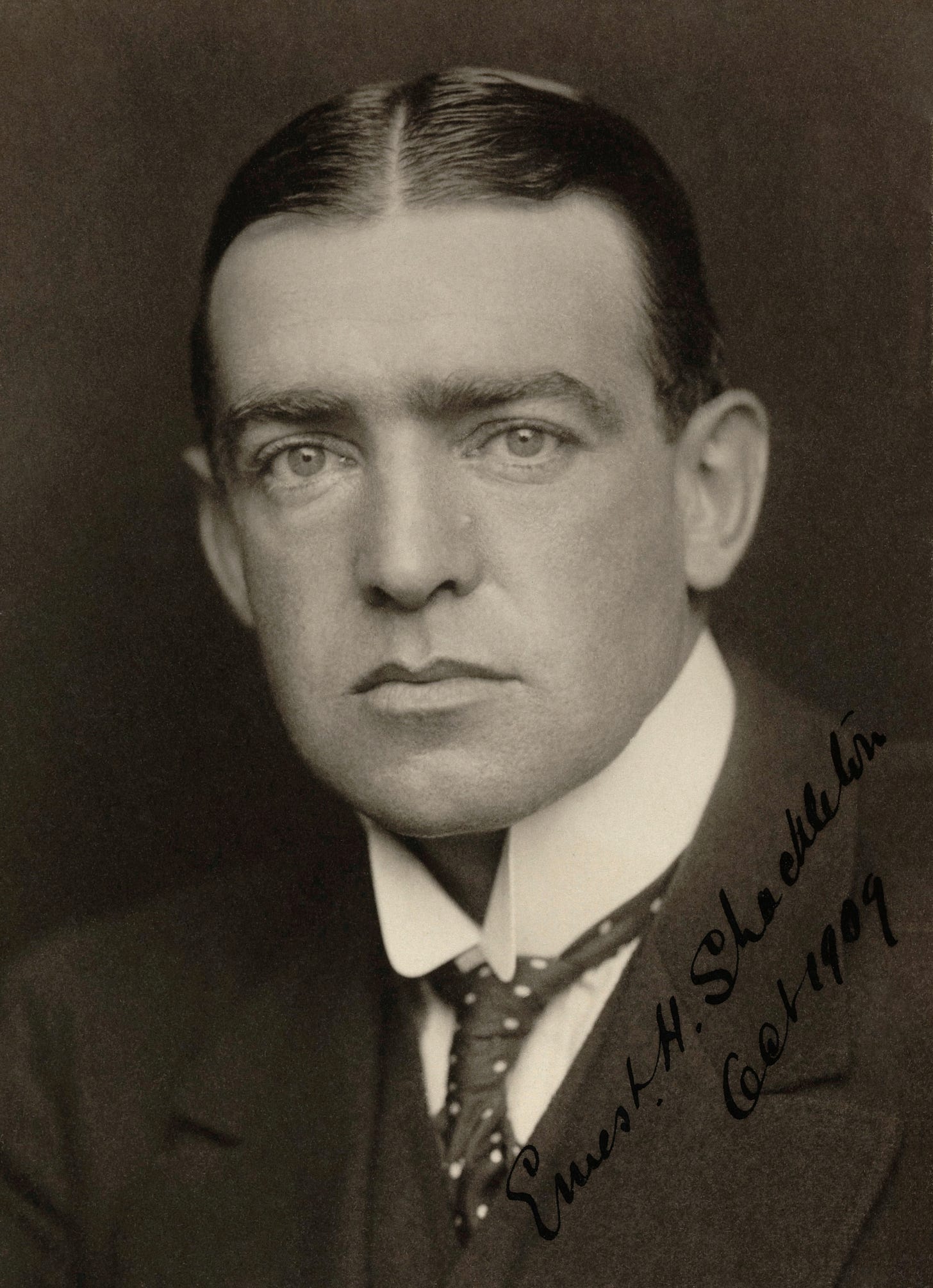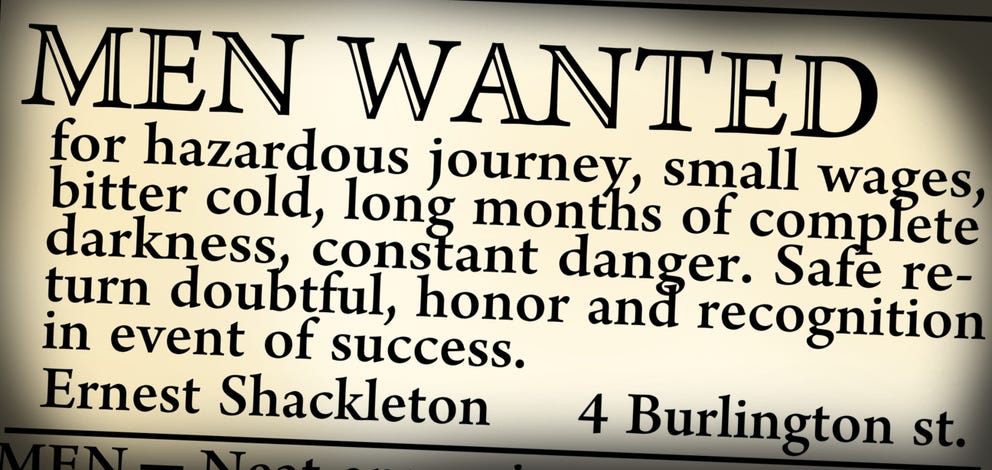Sir Ernest Henry Shackleton’s ship Endurance trapped in the ice and covered with a coating of frost. — Photo by Frank Hurley
“During the night take flashlight of ship beset by pressure. This necessitated some 20 flashes, one behind each salient pressure hummock, no less than 10 flashes being required to satisfactorily illuminate the ship herself. Half blinded after the successive flashes, I lost my bearings amidst hummocks, bumping shins against projecting ice points & stumbling into deep snow drifts.” - Frank Hurley's diary
When I was thirteen, my uncle gave me a copy of Endurance [click to read] to read one Summer. The heroic story of Sir Ernest Henry Shackleton and his men surviving the entrapment by ice and crushing of their ship riveted me. The men pile supplies into lifeboats and drag them like sleds across the ice, then set to sea in the hopes of reaching land hundreds of miles away. Finally the men reach land... but it is a harsh land, and they live under the shelter of the lifeboats as they ponder what to do next. The story of the aptly-named Endurance is one EVERY thirteen year old boy should have handed to him. In it are many lessons for life ahead.
Sir Ernest Henry Shackleton in 1904. — Photo by George Charles Beresford
The1914 Imperial Trans-Antarctic Expedition was originally intended to land Shackleton and his party on the continent of Antarctica, which they would then cross with dogsleds. When Endurance became trapped in the ice and was then crushed, the mission changed to one of survival. That the entire crew survived is an incredible story of perseverance in the face of overwhelming odds.
But Shackleton was not through. In 1921 he put together another Antarctic expedition. This time his ship was named Quest. They set out from Rio de Janerio, arriving at South Georgia on January 4, 1922, headed once more for Antarctica. Shackleton died of heart failure on January 5, 1922. At his wife’s request, he was buried in the village of Grytviken in South Georgia.
Ship’s physician Alexander Macklin had told Shackleton he was “overdoing things,” and “should try to live a more regular life,” but men like Shackleton seem to need more fundamentally to persist at doing things.
My uncle, who shared the book Endurance with me, was made of similar stuff. He tried to summit Mt. Fuji on a three-day pass, only to have to turn around within sight of the top lest he miss a train and be found AWOL. He never got another opportunity. He went home to become the track coach for a major university.
He loved my grandfather’s farm, and managed it actively until his death this year at 95 years of age. Like Shackleton, he lived fully right up until the end. His legacy is one of inspiration. He, like Shackleton, was one to persist at doing things and inspire those around him to do so as well!
Shackleton’s Advertisement for crew members.
Endurance (1933) Film [click to watch]
The Endurance [click to watch]





